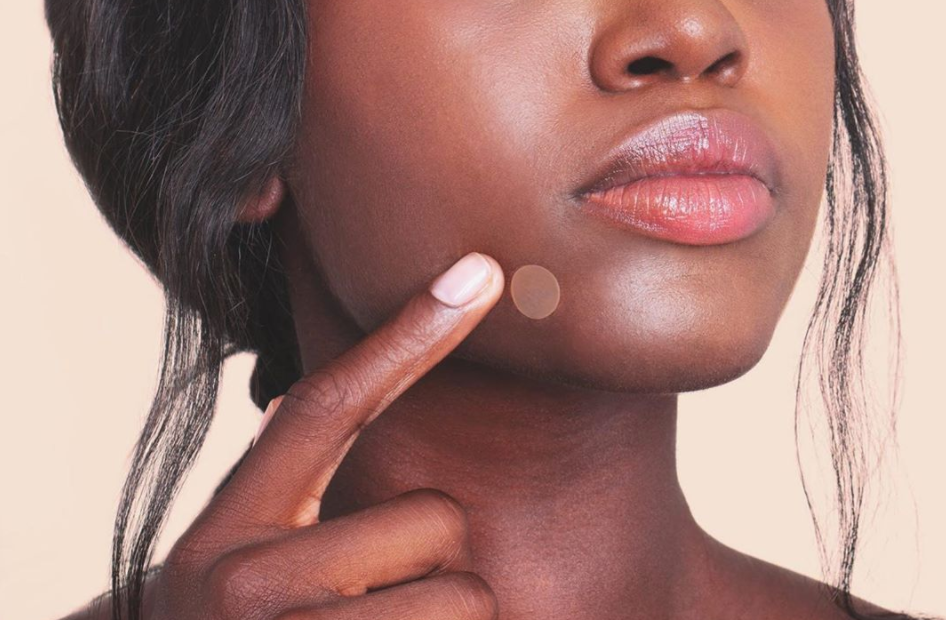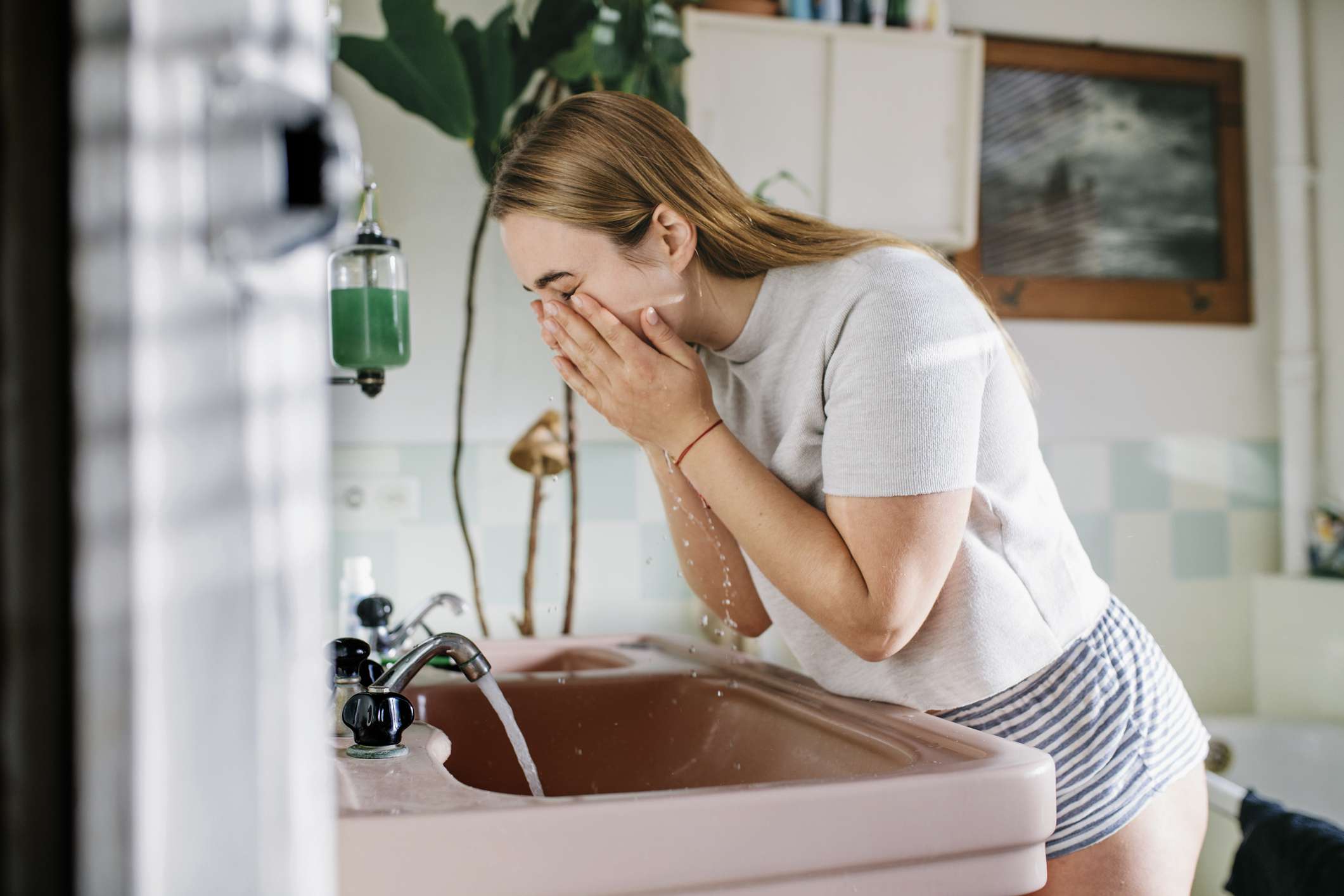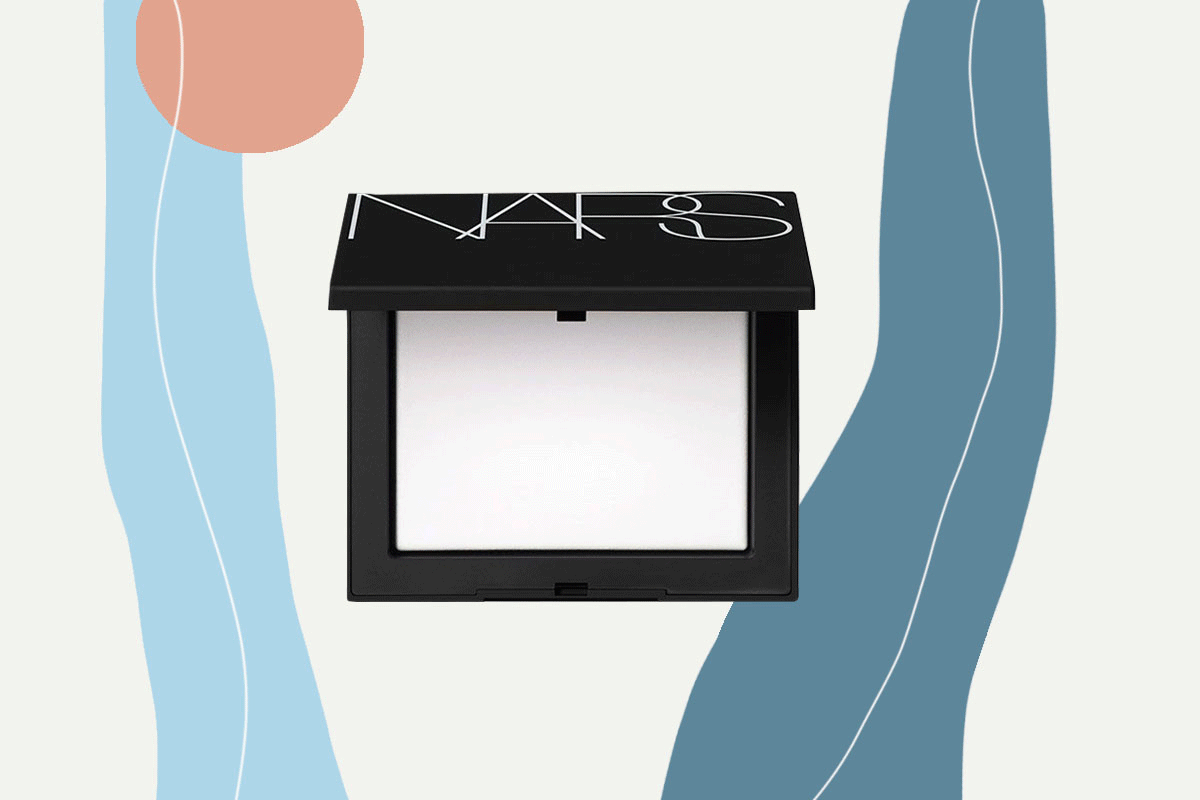How to Identify and Treat a Cold Sore vs. a Pimple, According to a Derm

There’s a good chance that a lot of us have found ourselves in front of the bathroom mirror at some point, examining a strange little red or raised bump around our lips or nose. Most likely, we’ve brushed it off as a pimple, which in many cases, it may be. Sometimes, however, that little bump may look or feel a little different than your typical breakout, in which case we’ve probably found ourselves Googling cold sore symptoms and images in an effort to self-diagnose that mysterious thing on our skin.
So, when it comes to cold sore vs pimple, what’s the difference? We spoke with a board-certified dermatologist to learn how to tell them apart, what causes each of them, and the best ways to prevent either.
What Is a Cold Sore?
“Cold sores, also called fever blisters, are a viral infection that commonly occurs around the lips and are spread by close contact,” explains Dr. Y. Claire Chang, a board-certified cosmetic dermatologist at Union Square Laser Dermatology in Manhattan, New York.
“Cold sores present with red, fluid-filled blisters that often occur in groups and can appear anywhere on the face, but most commonly occur near the lips,” says Chang. If you think you may have a cold sore, there are some common, telltale signs that might give it away (which aren’t usually associated with a pimple). “Cold sores are often preceded by symptoms of tingling, burning, itching, or pain in the affected area,” she adds. “A group of blisters may appear, eventually turning into a scab or crust, and healing over a course of one to two weeks.”
Okay, Then What’s a Pimple?
A pimple, on the other hand, is a symptom of acne and occurs when a hair follicle, or pore, becomes clogged with a natural oil called sebum and some form of debris, like dead skin cells. This combo then forms bacteria called P. acnes, which leads to breakouts. “Pimples are typically due to acne vulgaris and can present in a variety of ways, ranging from a whitehead to a small pink bump to a large, deep cyst. Pimples most commonly occur during puberty, but can also occur in adulthood,” Dr. Chang says. Types of pimples often mistaken for cold sores include:
- Pustules: According to the American Academy of Dermatology, these breakouts are easily mistaken for cold sores as they are filled with pus, which usually causes them to take on a yellowish color, and form a “head” that may resemble a scab.
- Papules: Papules appear as small, red bumps which rest closer to the surface of the skin than pustules, and are hard to the touch. Because these breakouts are a form of inflammatory acne, they will take on a red and swollen appearance, much like many cold sores.
- Cystic Acne: Although this acne rests under the surface of the skin, the large, swollen red bumps they produce are often painful and sensitive to touch, like cold sores.
Common Causes of Cold Sores and Pimples
While they may be mistaken for each other in many cases, pimples and cold sores are symptoms of completely different health conditions, and are caused by entirely different factors.
Causes of Cold Sores
“Cold sores are caused by herpes simplex virus (HSV) and are spread from person to person through close contact, like kissing or sharing drinks,” Dr. Chang explains. “Pimples, on the other hand, result from excess oil, dead skin cells, and bacteria accumulating in the pores of the skin. This can cause inflammation and pus formation, causing red, inflamed papules.”
Like any other symptoms of a disease, certain stimuli have been known to trigger the onset of both cold sores and pimples, which are a good thing to keep in mind if you live with either. “Common triggers of cold sores include a fever, the common cold, other infections, sun exposure, stress, fatigue, injury, and laser treatments,” says Dr. Chang.
Causes of Pimples
“Factors contributing to acne formation include genetics/family history, stress, diet, hormonal fluctuations, certain medications, and comedogenic skin care products,” says Chang. One thing pimples and cold sores have in common, though, is that they are both extremely common. Dr. Chang goes on to state that oral herpes, the cause of cold sores, is very prevalent in the U.S. and affects about 50 to 90 percent of the population. Acne is also an incredibly common skin disease, affecting around 85 percent of people between the ages of 12 and 24. Additionally, the symptoms that both oral herpes and acne produce — cold sores, and pimples, are treatable.

Treatment and Prevention
When it comes to reducing cold sores, and pimples, there are two routes to take that may help keep your skin clear—treating the symptoms, and taking preventative measures to avoid recurring issues.
- Medication. Both pimples and cold sores will leave your skin in a matter of time, usually within a week or two at most, but you can speed up your recovery with prescription medication. “Antiviral medications, like valacyclovir, can help decrease the duration of cold sores if taken when the first signs appear,” says Dr. Chang. “Pimples can be treated with a wide range of topical and oral medications as well as laser treatments. Topical antibiotics, like clindamycin lotion, and oral antibiotics, like doxycycline and minocycline, are effective in preventing and treating inflammatory acne. Some patients may require hormonal medications or isotretinoin for control of their acne.”
- Avoid triggers. The herpes virus may become triggered when immune systems are already compromised, so keeping this and other triggers in mind may help you prepare for a possible cold sore outbreak, or possibly avoid one altogether. “Avoiding common cold sore triggers, such as stress, colds, or injury, can prevent its onset. Given sun exposure can trigger cold sores, sunscreen and SPF-containing lip balm can prevent future breakouts,” Dr. Chang explains. “Oral antivirals can be taken daily to help prevent cold sores from occurring in patients who get frequent recurrences. Taking oral antivirals around the time of facial laser treatments or lip injections can prevent the onset of cold sores.”
- Maintain a healthy diet. “Growing research suggests that specific foods, like high sugar foods and dairy, may trigger acne in some patients,” Dr. Chang states, so if you notice pimples after you enjoy certain foods, it may be best to steer clear if you don’t want to deal with a breakout. It’s important to remember that, while a balanced diet may reduce herpes or acne symptoms for some people, it will not actually eliminate either condition. “Once you contract herpes simplex virus, however, there is no cure for it and the virus lies dormant in your body,” Dr. Chang says.
- Prevent acne with a skincare regimen. If you have acne, chances are, you have a skincare routine that’s evolved with your skin, and your skin’s needs, over time. Washing your face won’t actually slow down the production of pore-clogging oil, but regular cleansing and exfoliating can prevent dead skin cells from clogging pores and doing their part to contribute to the formation of pimples. “All acne patients should be on an effective preventative topical regimen,” says Dr. Chang. “Regular cleansing with a gentle cleanser can help prevent acne by removing excess oil, dirt, and bacteria from the skin. I recommend avoiding harsh scrubs as this can irritate and further inflame the skin.” For a gentle exfoliant, look to chemical varieties, like Paula’s Choice 2% BHA Liquid Exfoliant, which is considered a cult classic for a reason.
- Reduce stress. It may seem easier said than done sometimes, but if you have a stress-reduction technique that works for you, it may help keep your cold sores at bay, as stress is listed by countless sources as a known trigger: “Stress reduction techniques, like regular exercise or meditation, may prevent cold sores,” says Dr. Chang. In terms of acne, stress may increase oil production by causing certain hormones, like cortisol, to become produced in overdrive: “Stress can also worsen acne, and it is important to practice regular de-stressing techniques,” she adds.
- Use retinoids for acne. Pimples are formed when pores become clogged, so keeping those pores free from debris that may contribute to the formation of breakout-causing bacteria can greatly reduce symptoms. One way to do that is with a retinol product. “Retinoids fight the root causes of acne by normalizing skin cell turnover to reduce clogged pores and comedones, as well as decrease inflammation,” Dr. Chang says. “Retinoids, such as the one found in Differin Gel, are available over-the-counter now, without a prescription and are effective in patients with mild to moderate acne, or even occasional breakouts. Differin Gel can help prevent and treat both whiteheads and inflammatory, red acne bumps.”
Here's Why You Keep Breaking Out Along Your Lip Line









